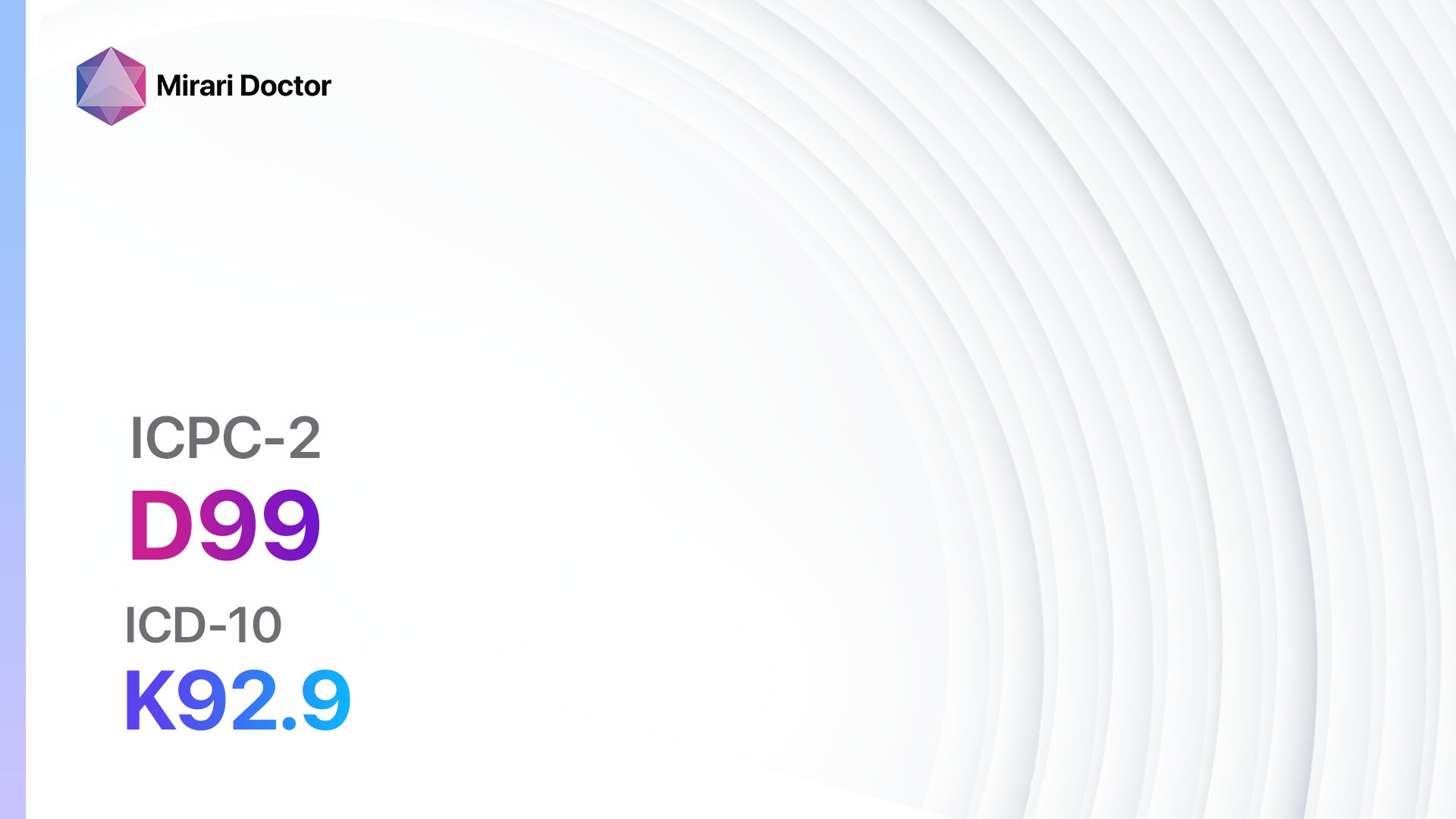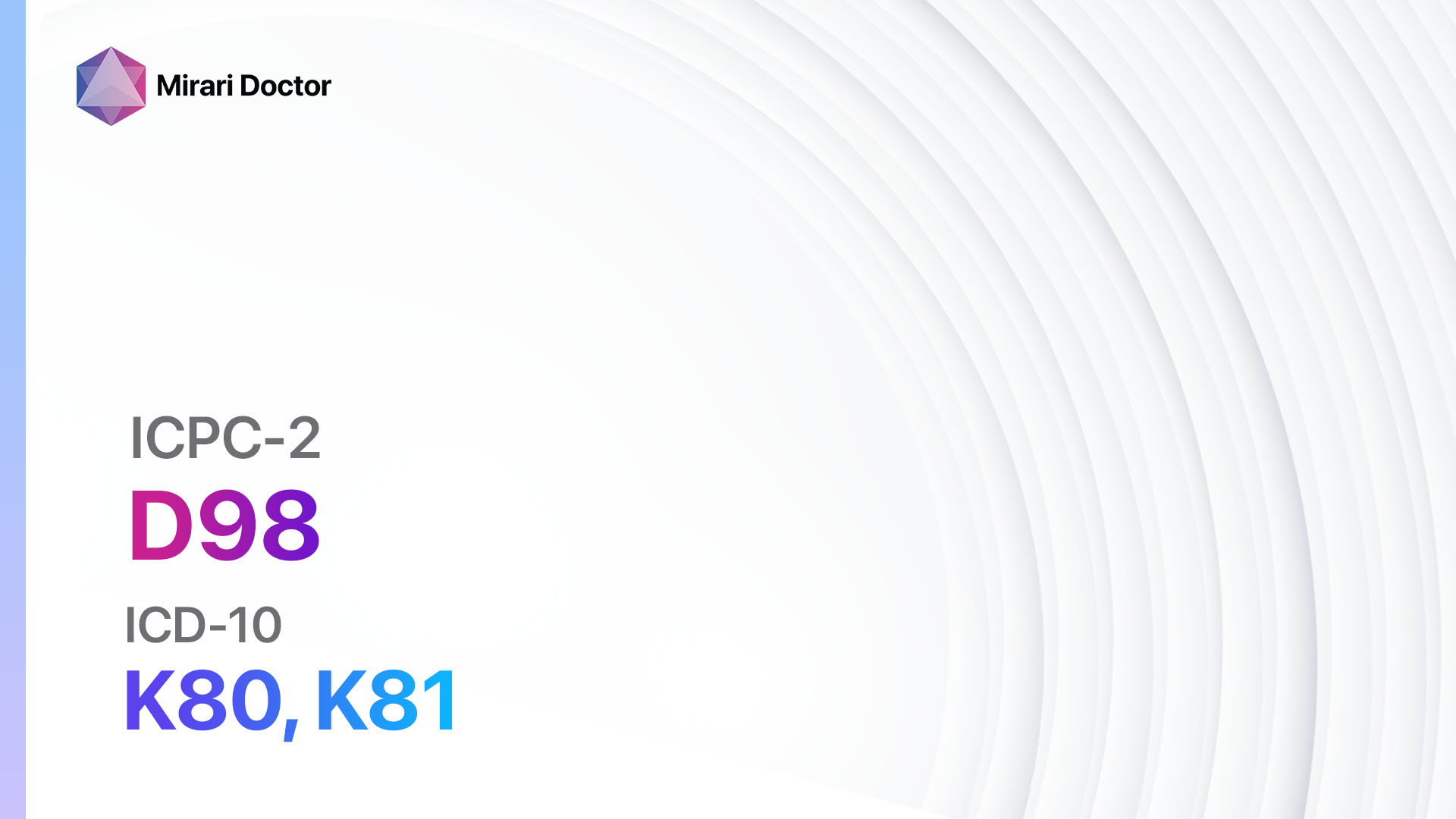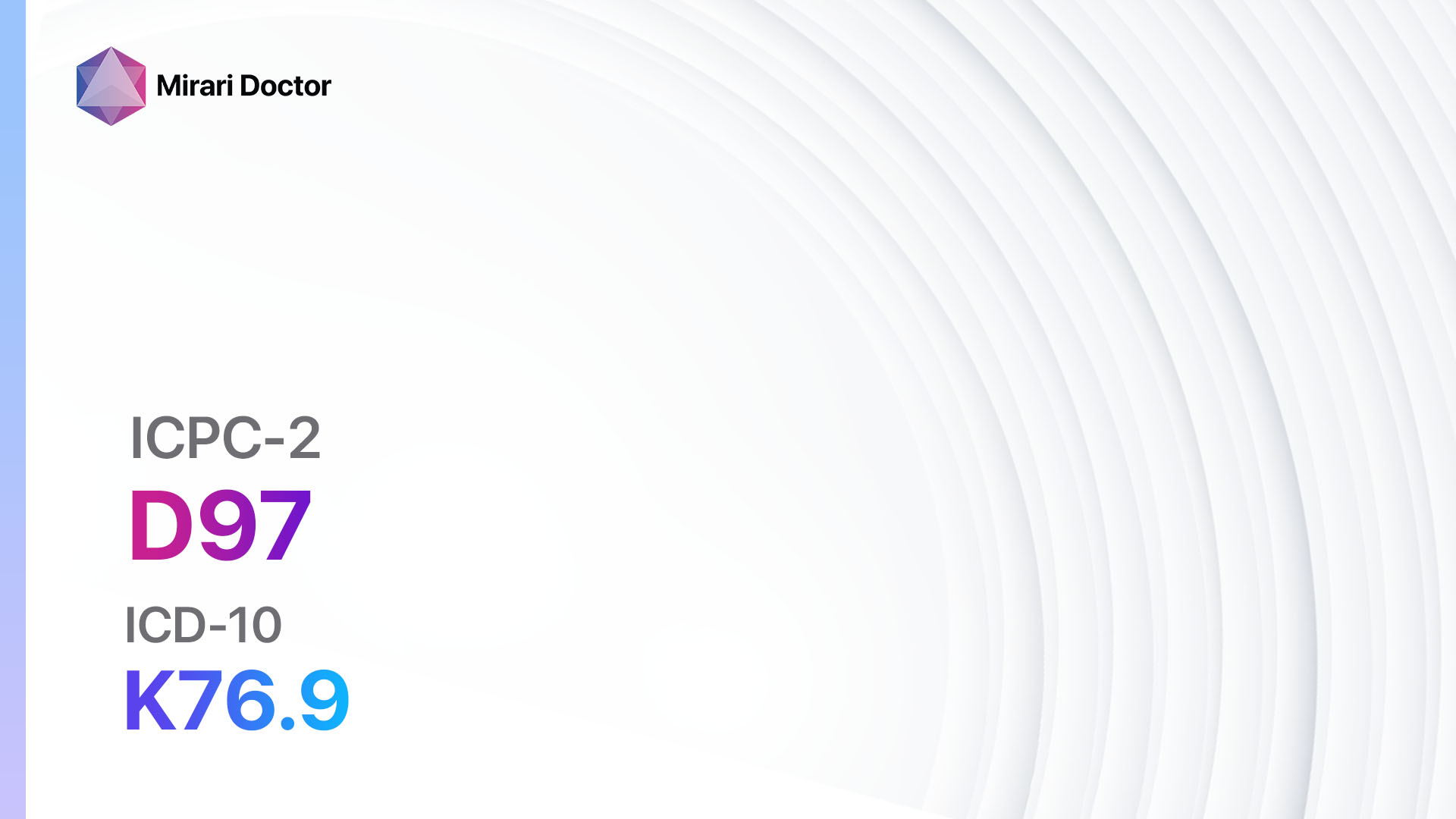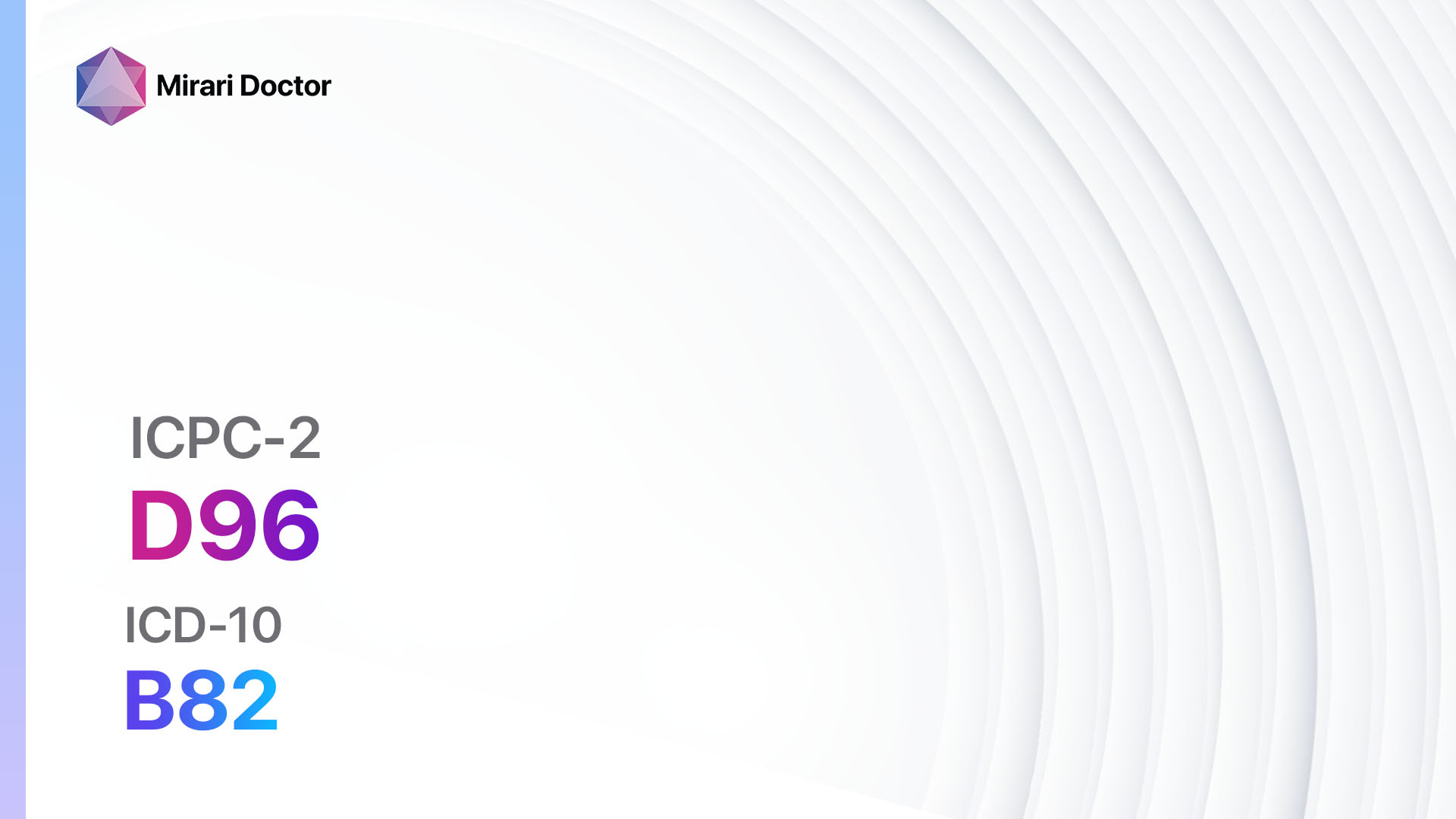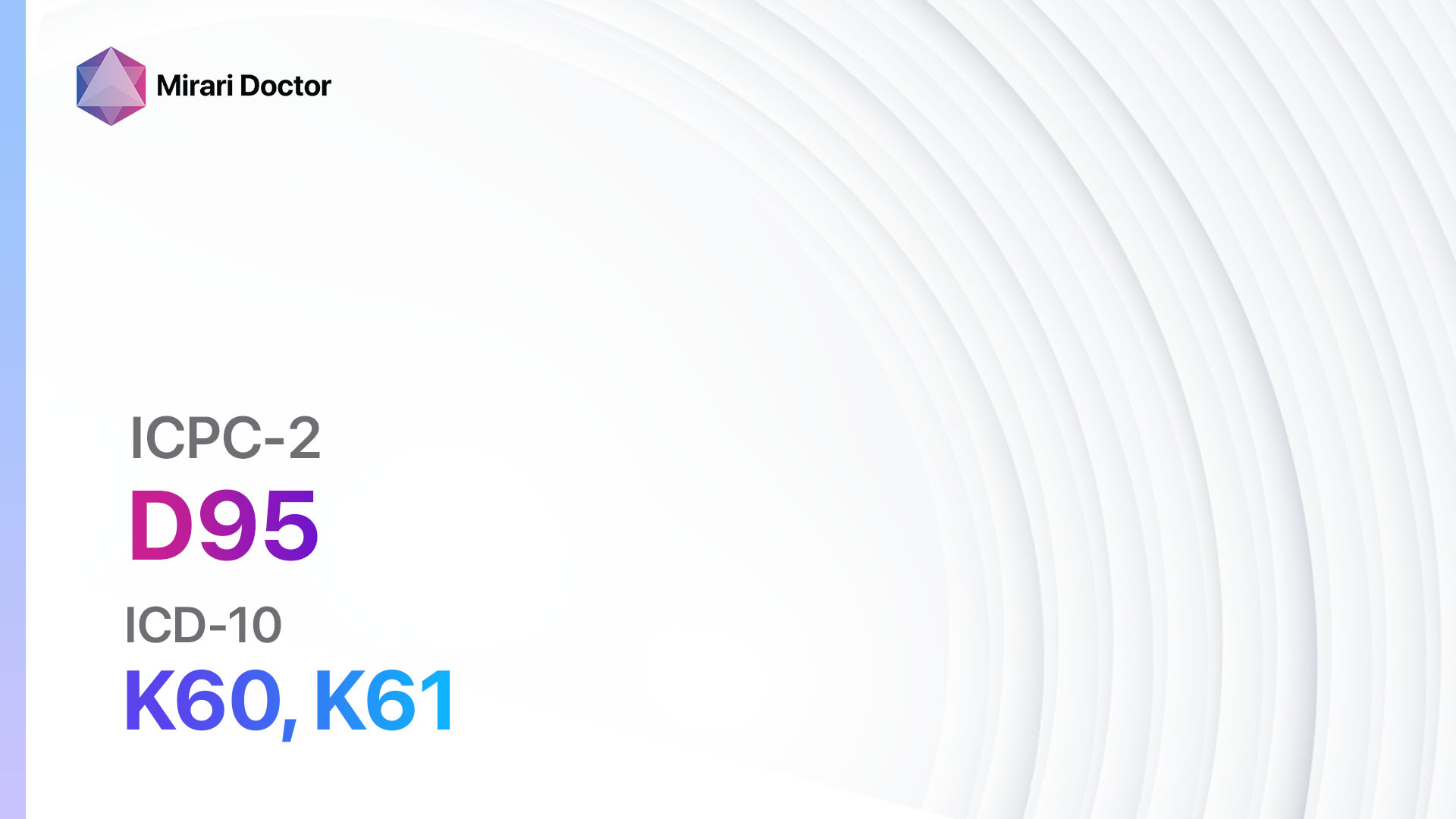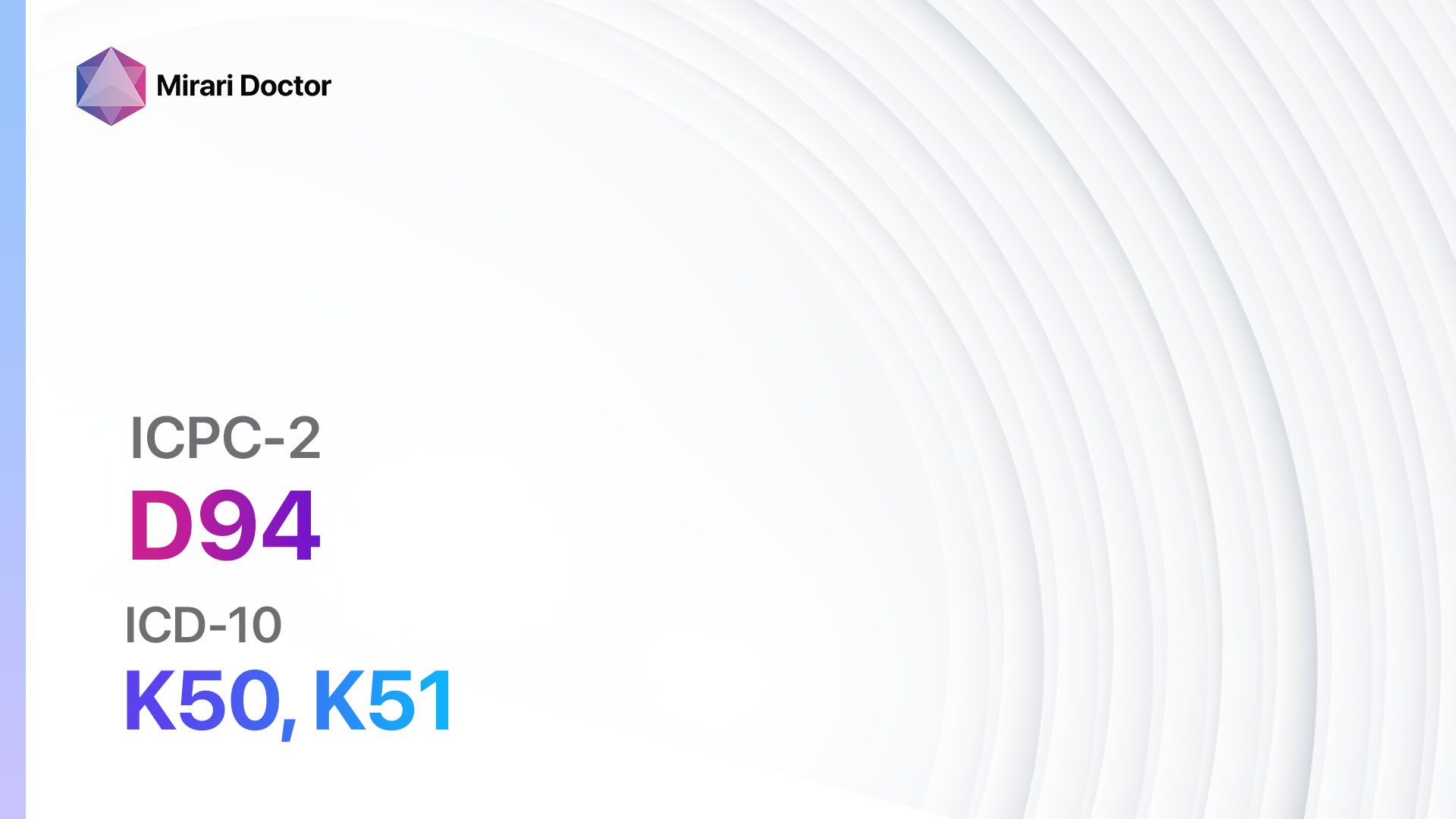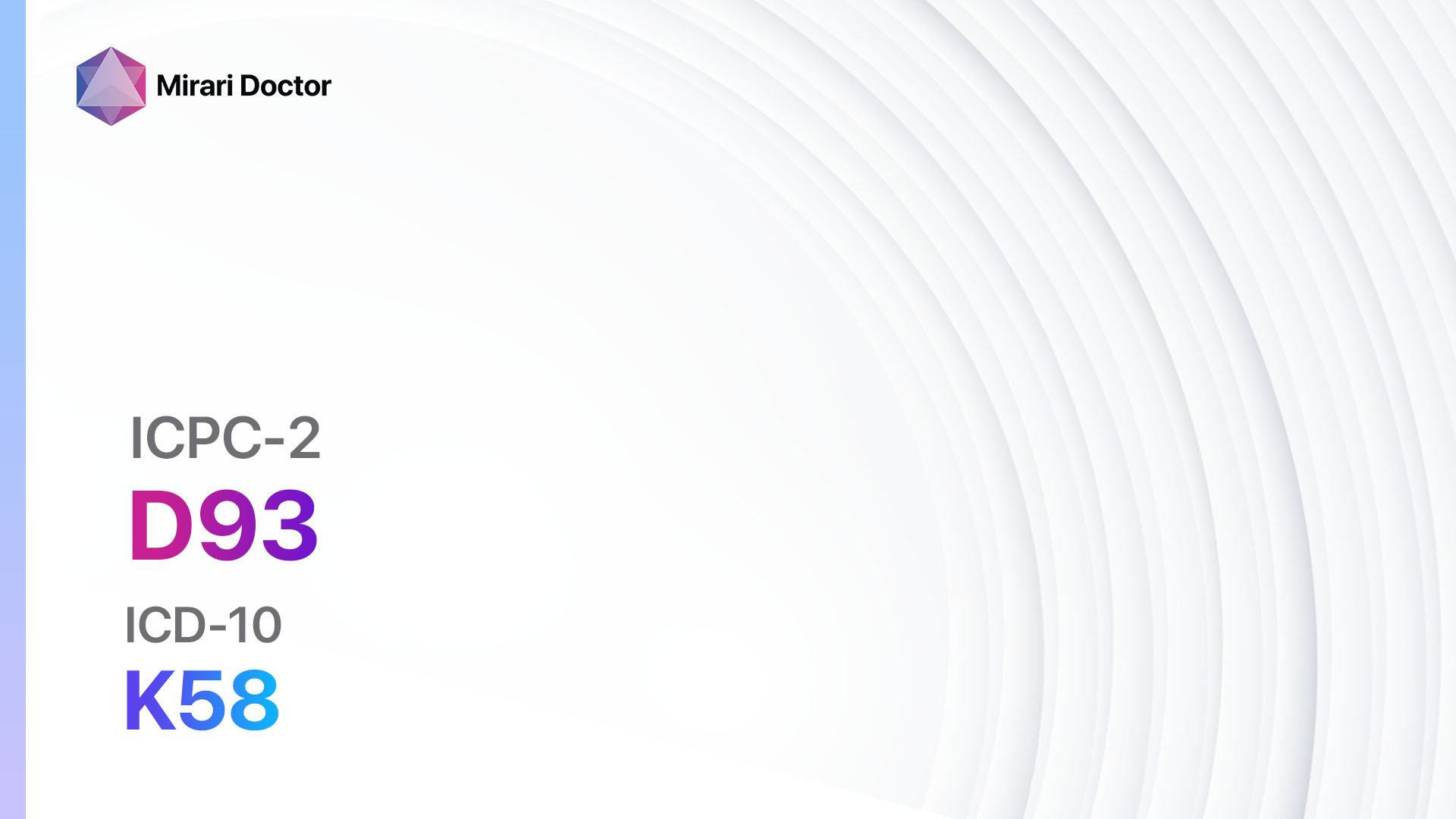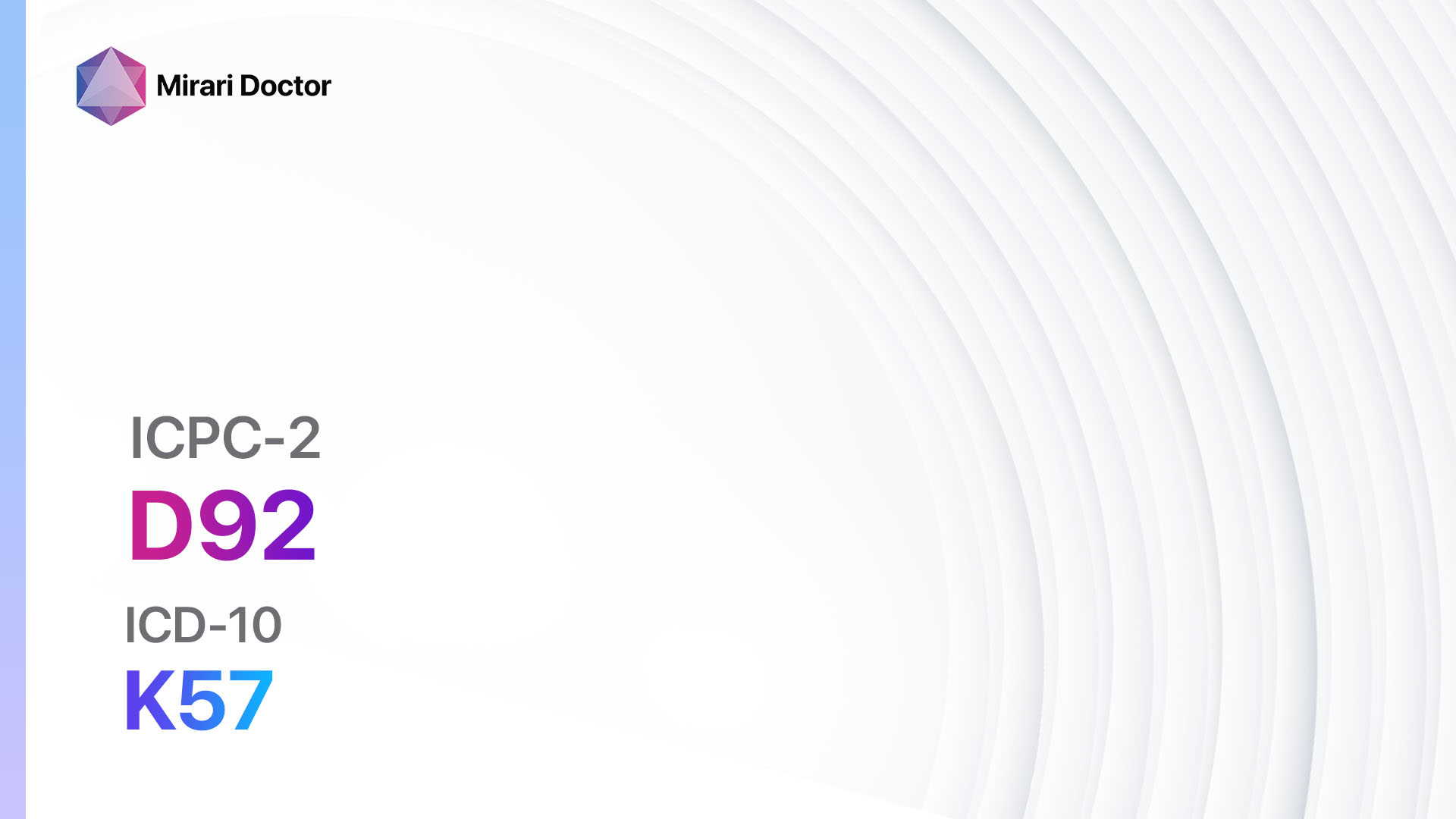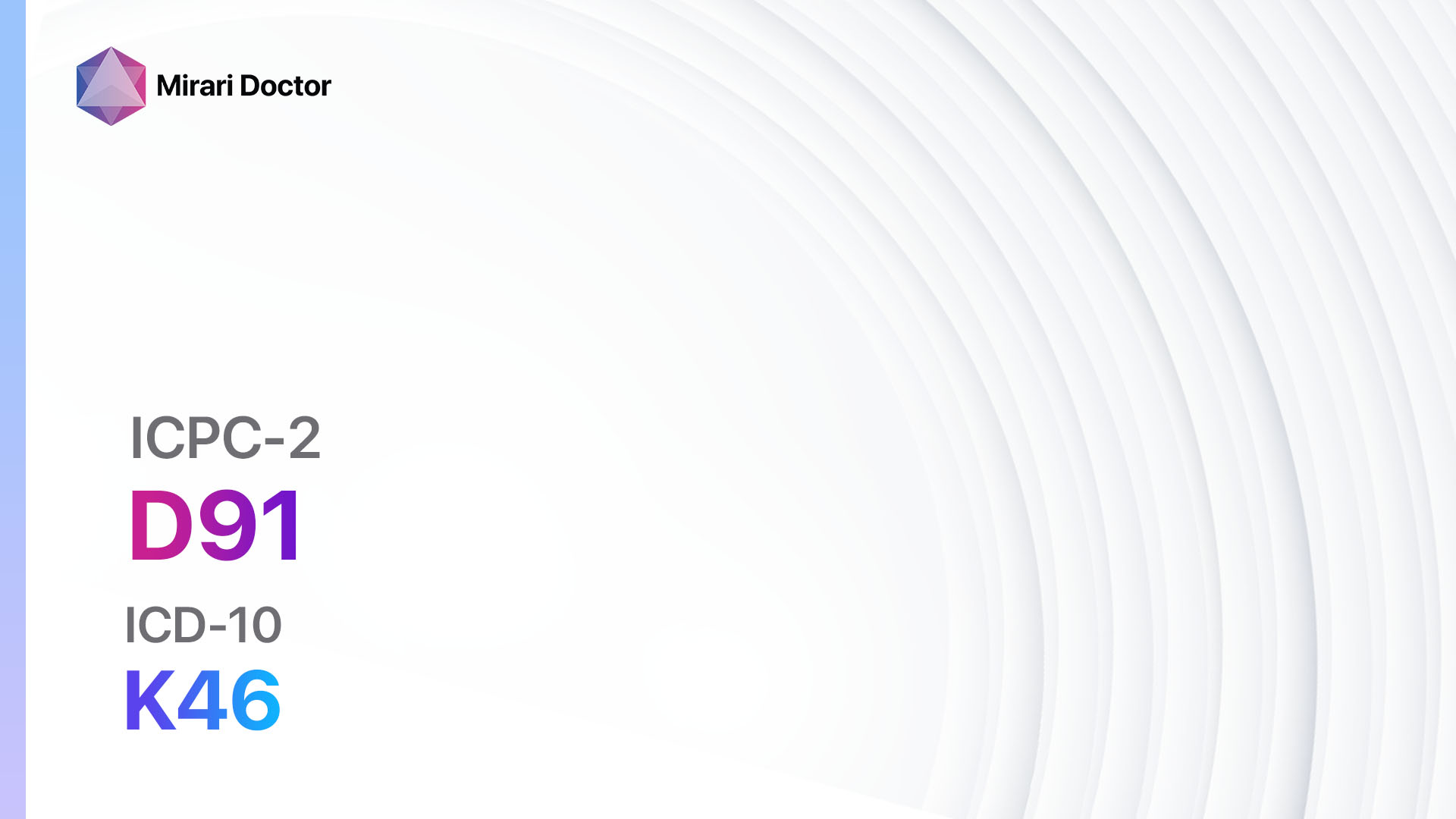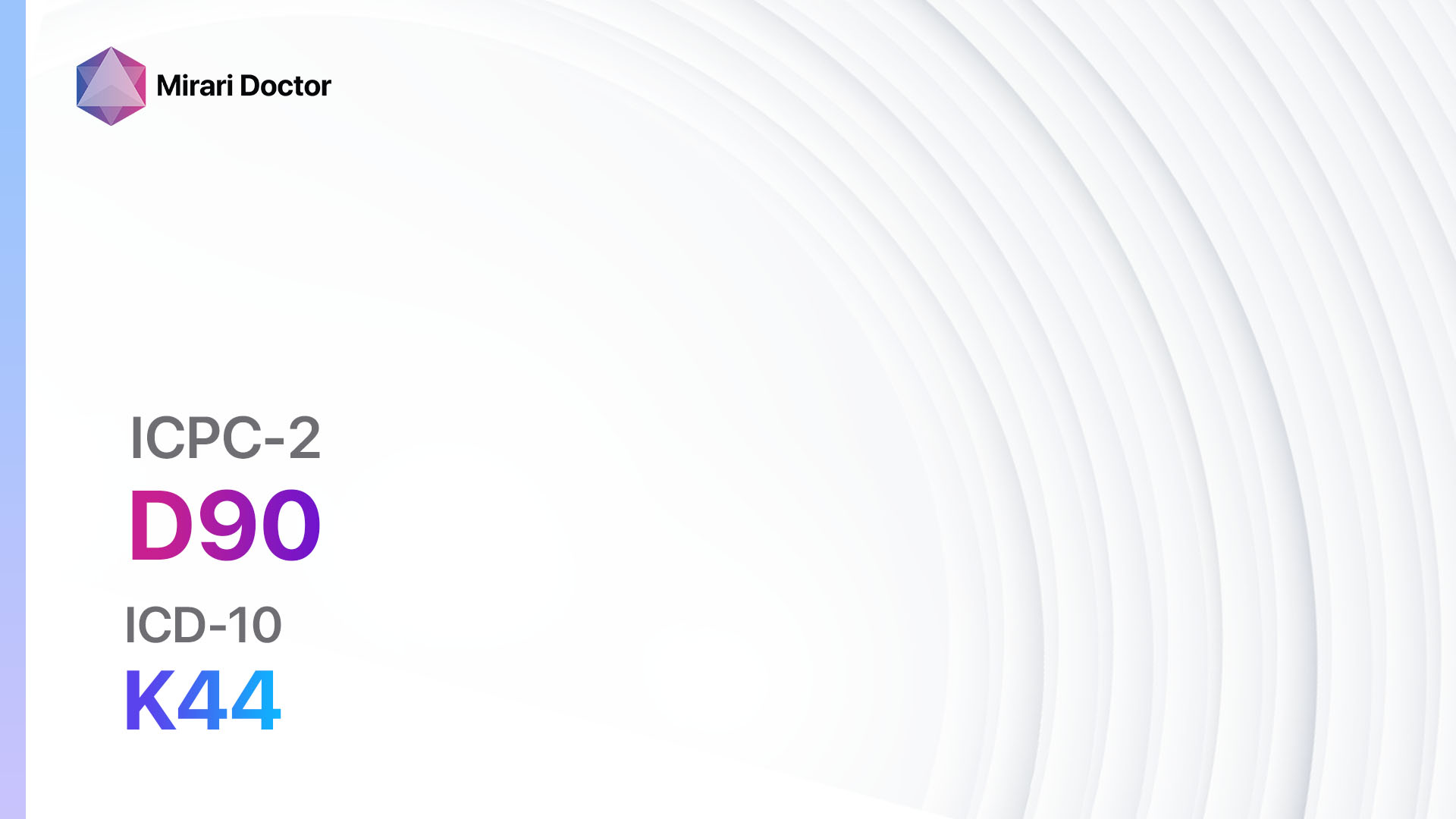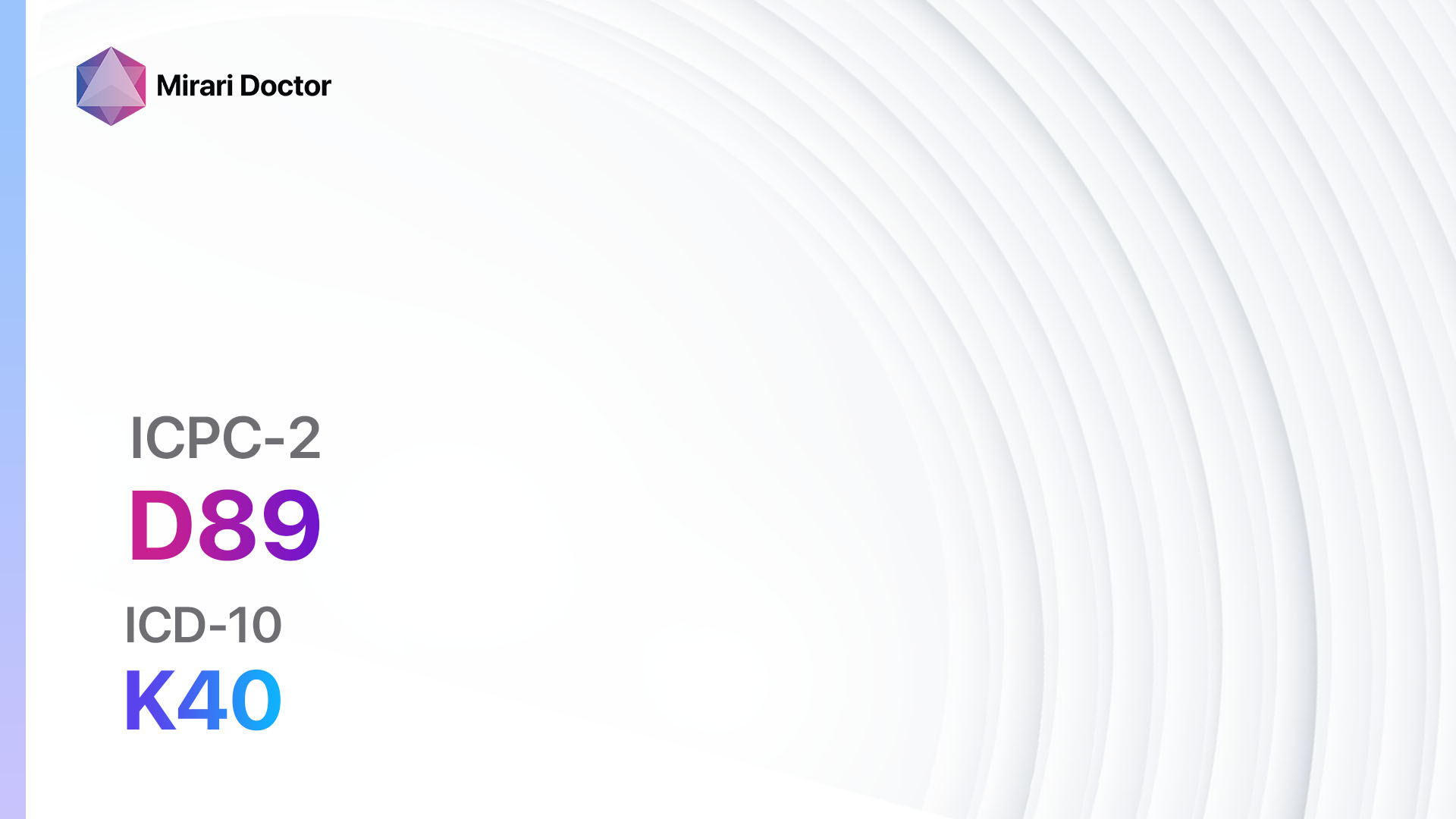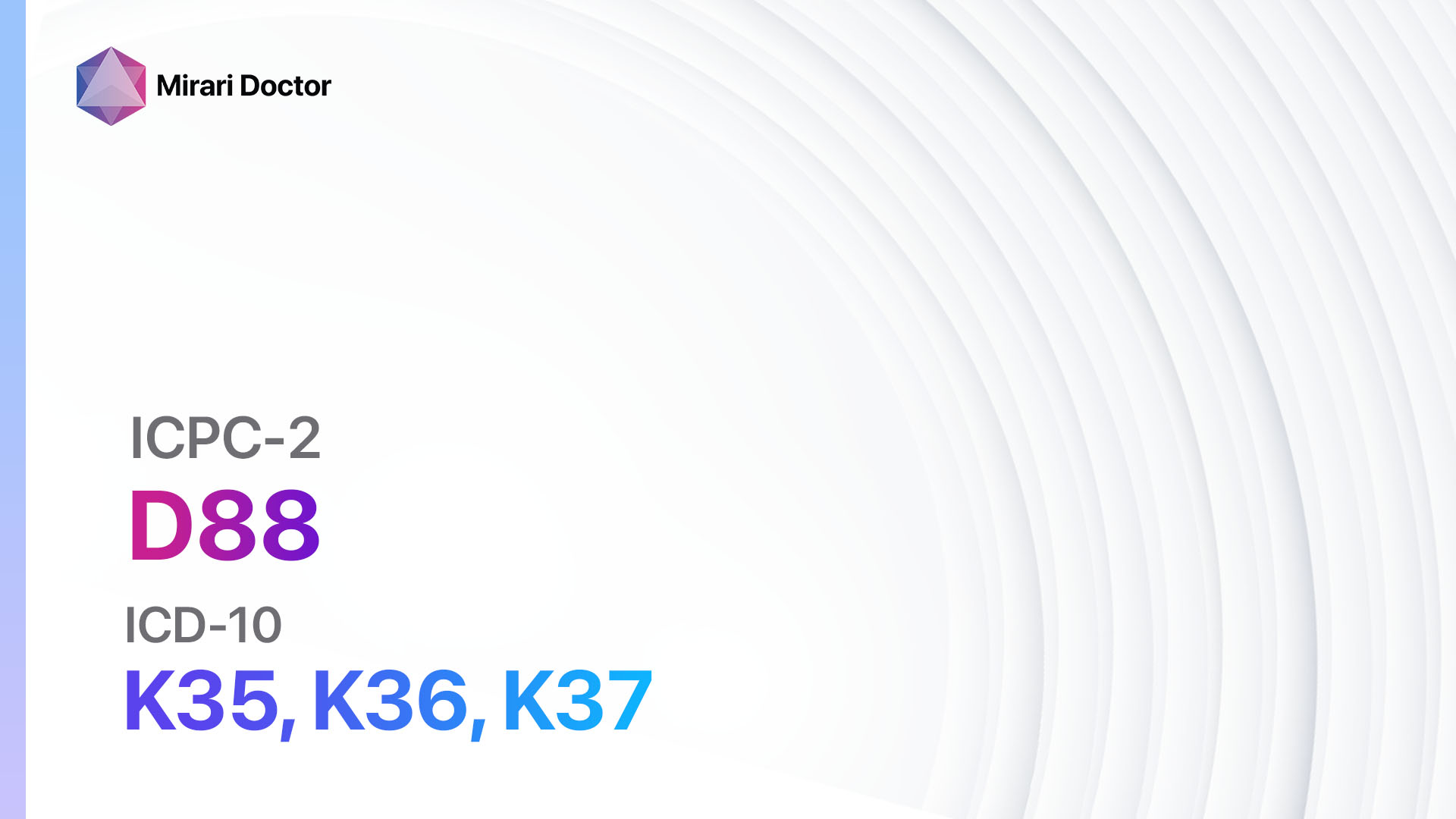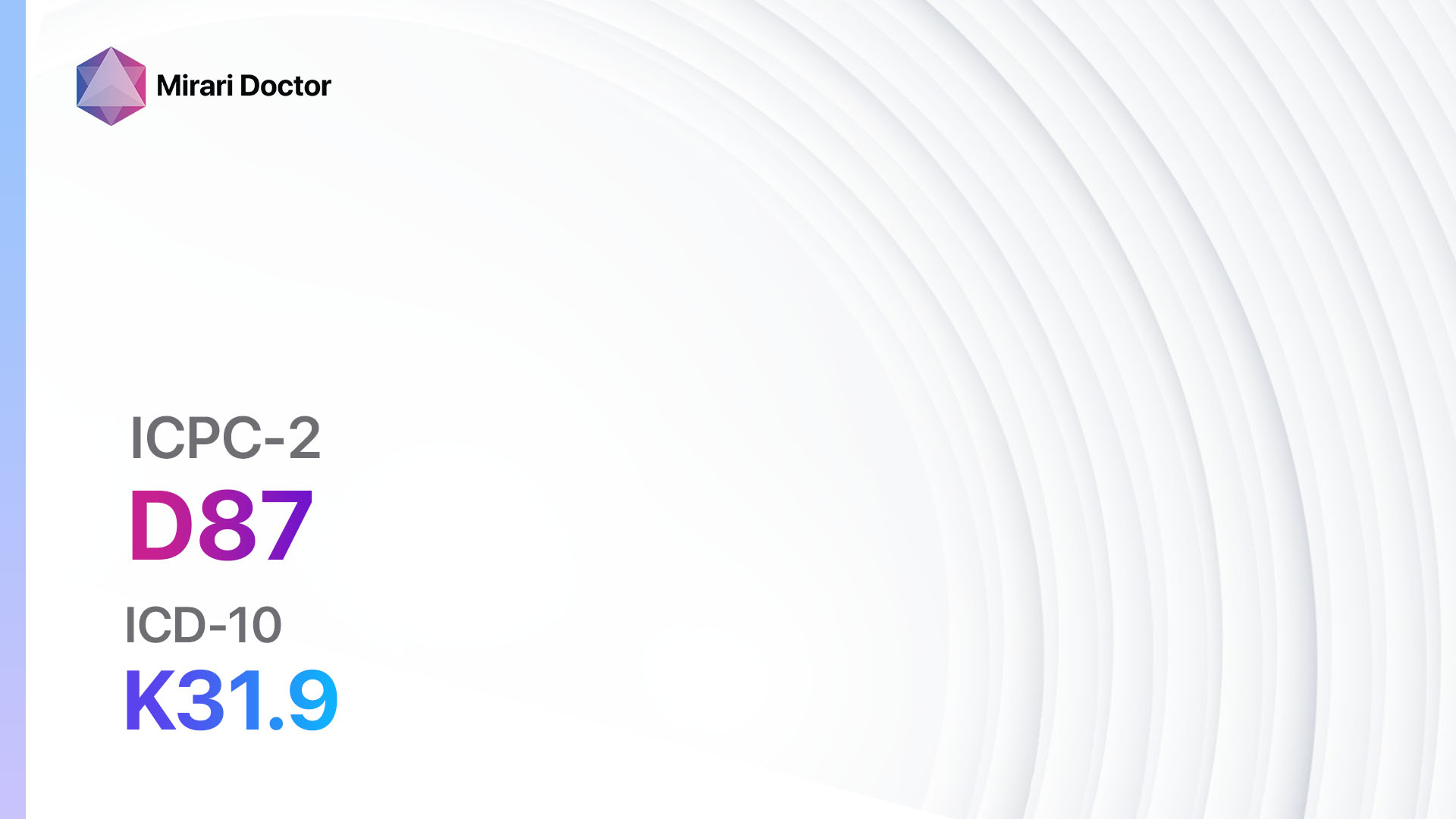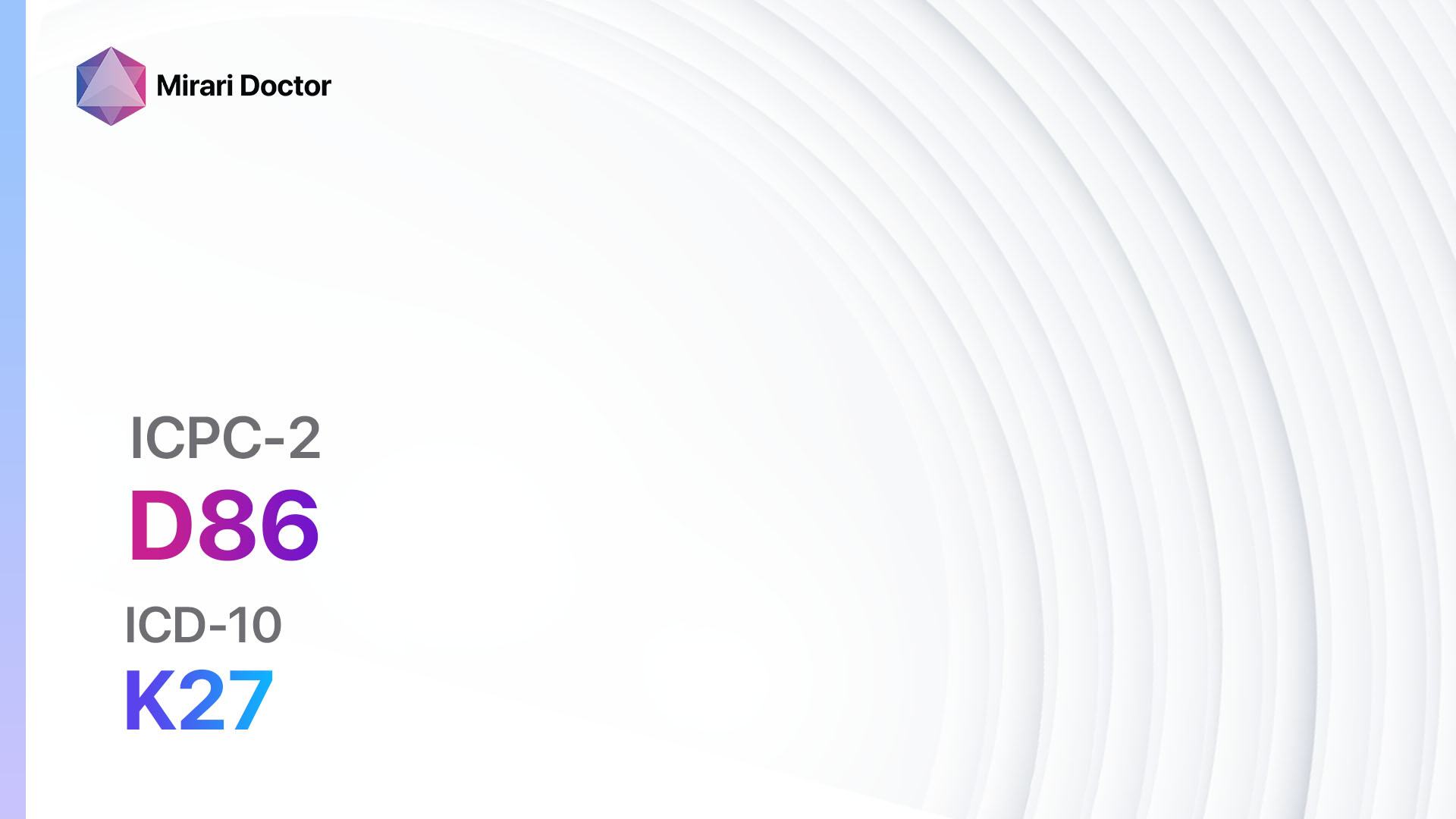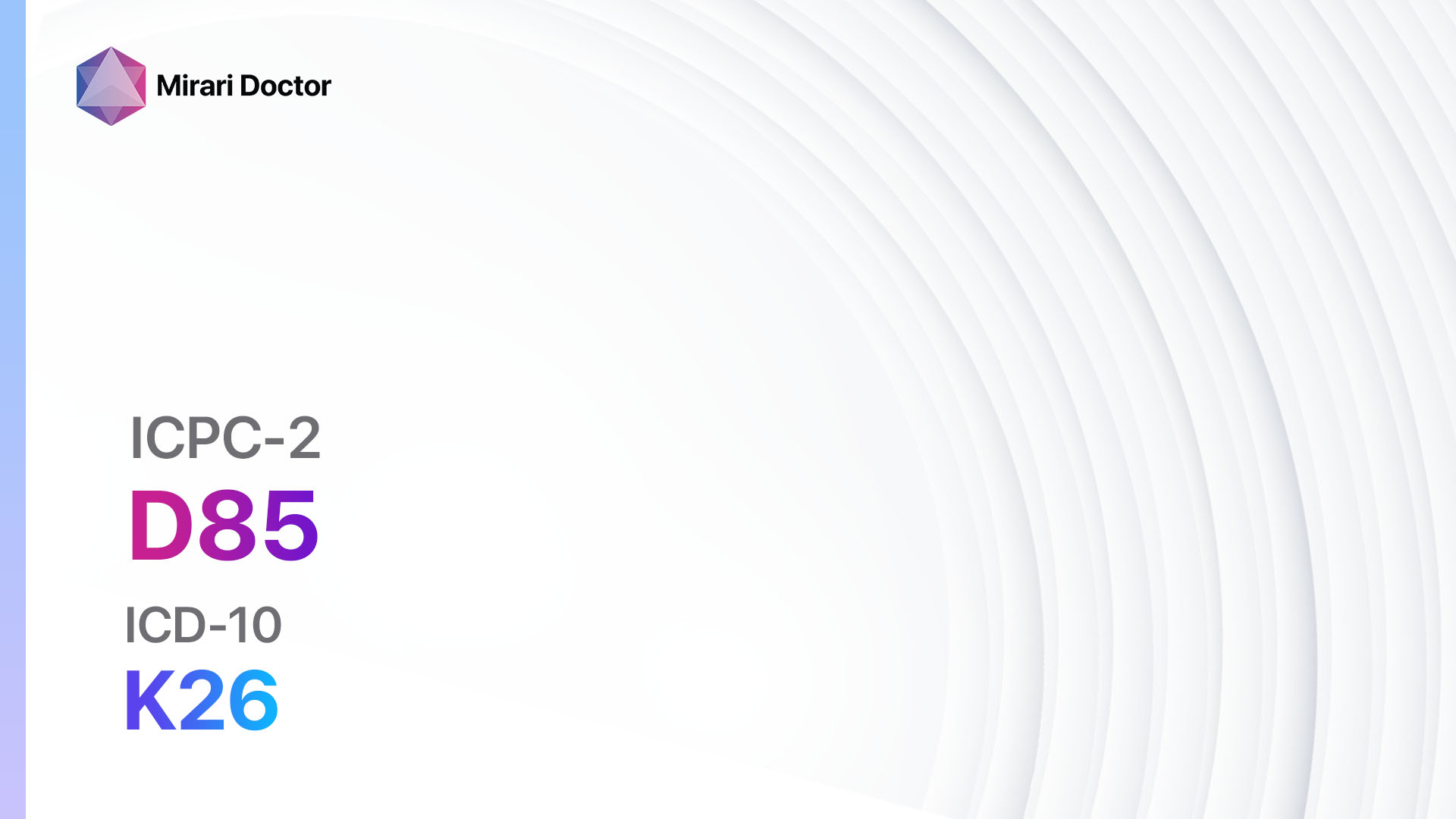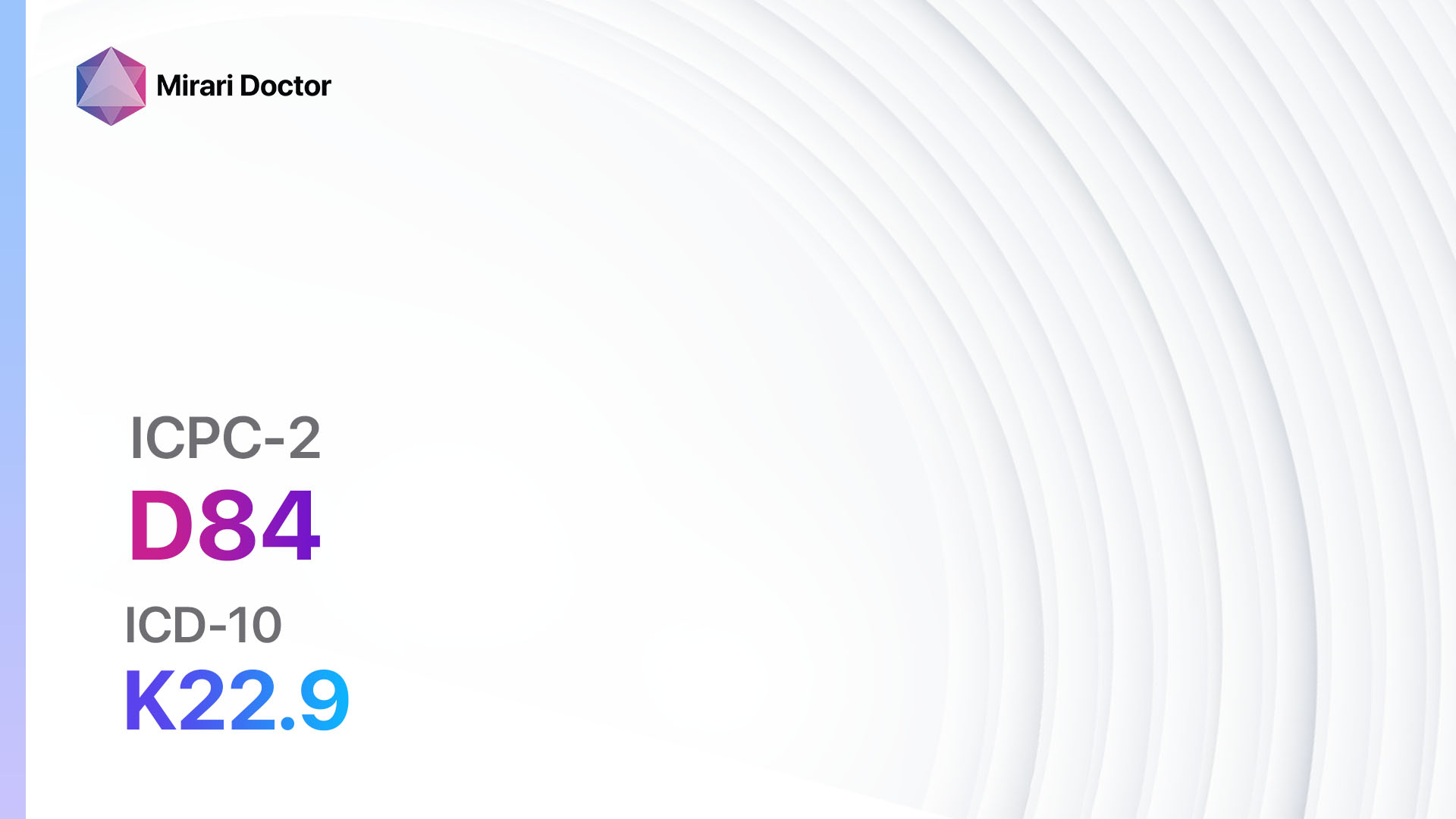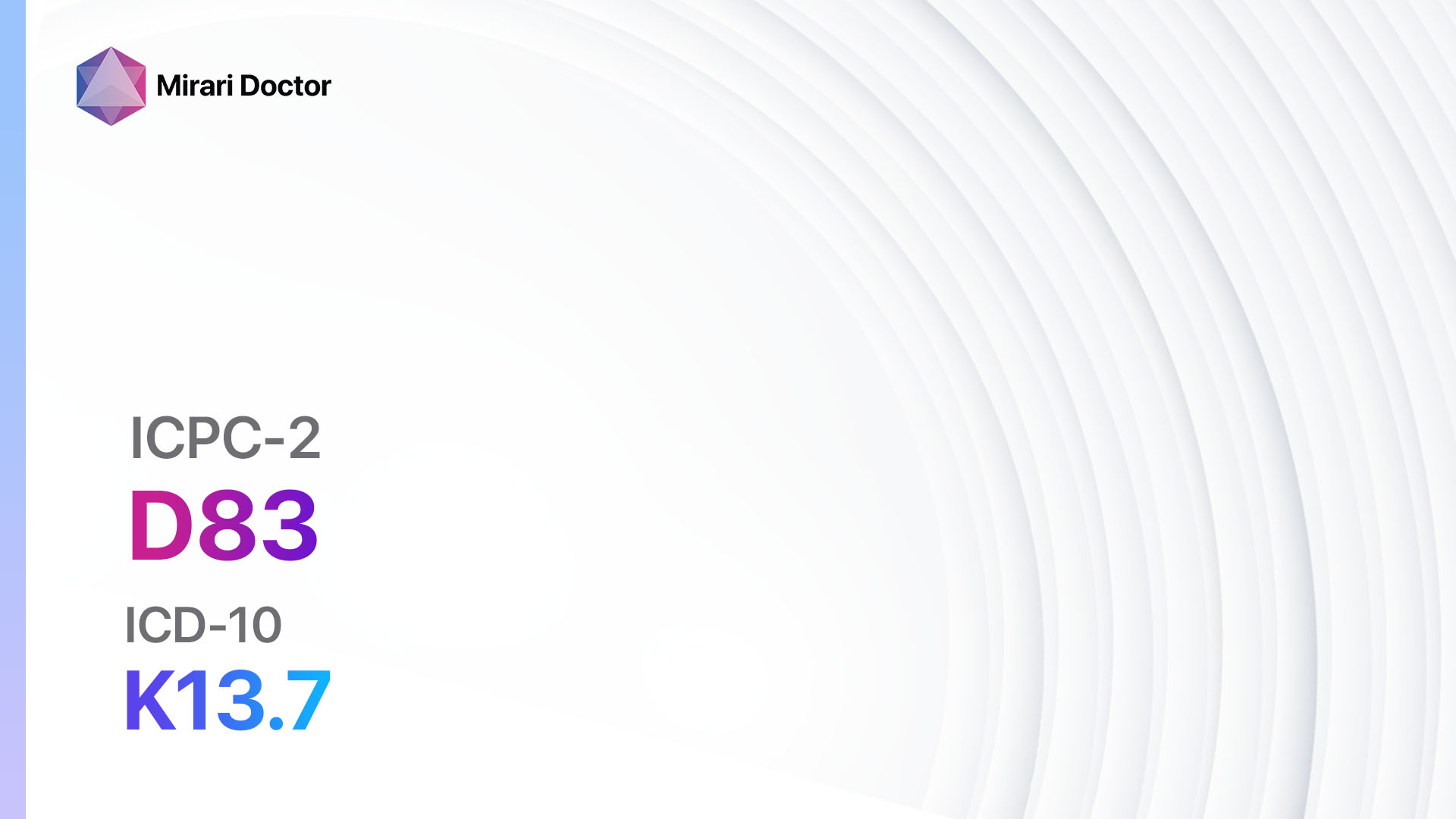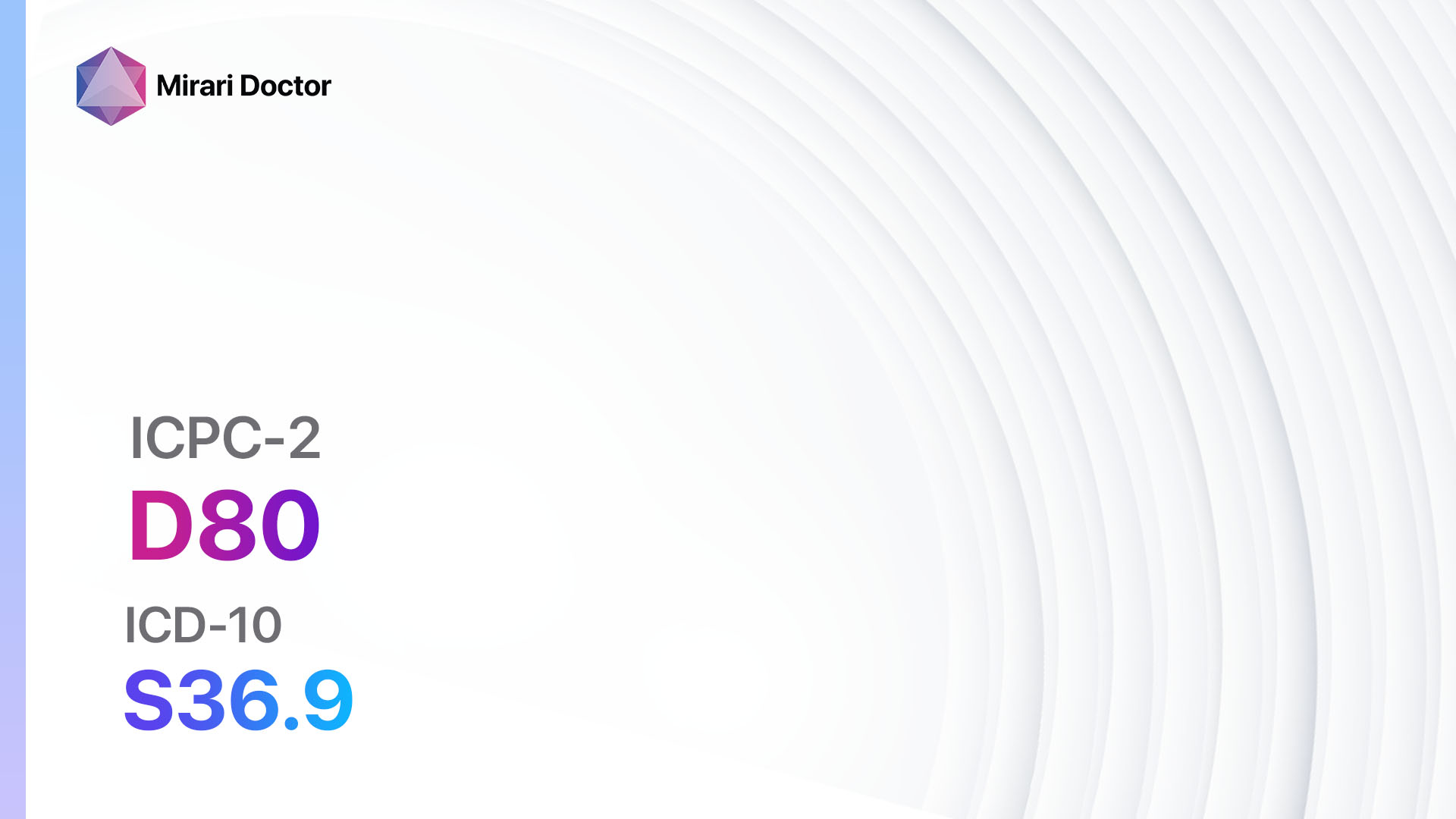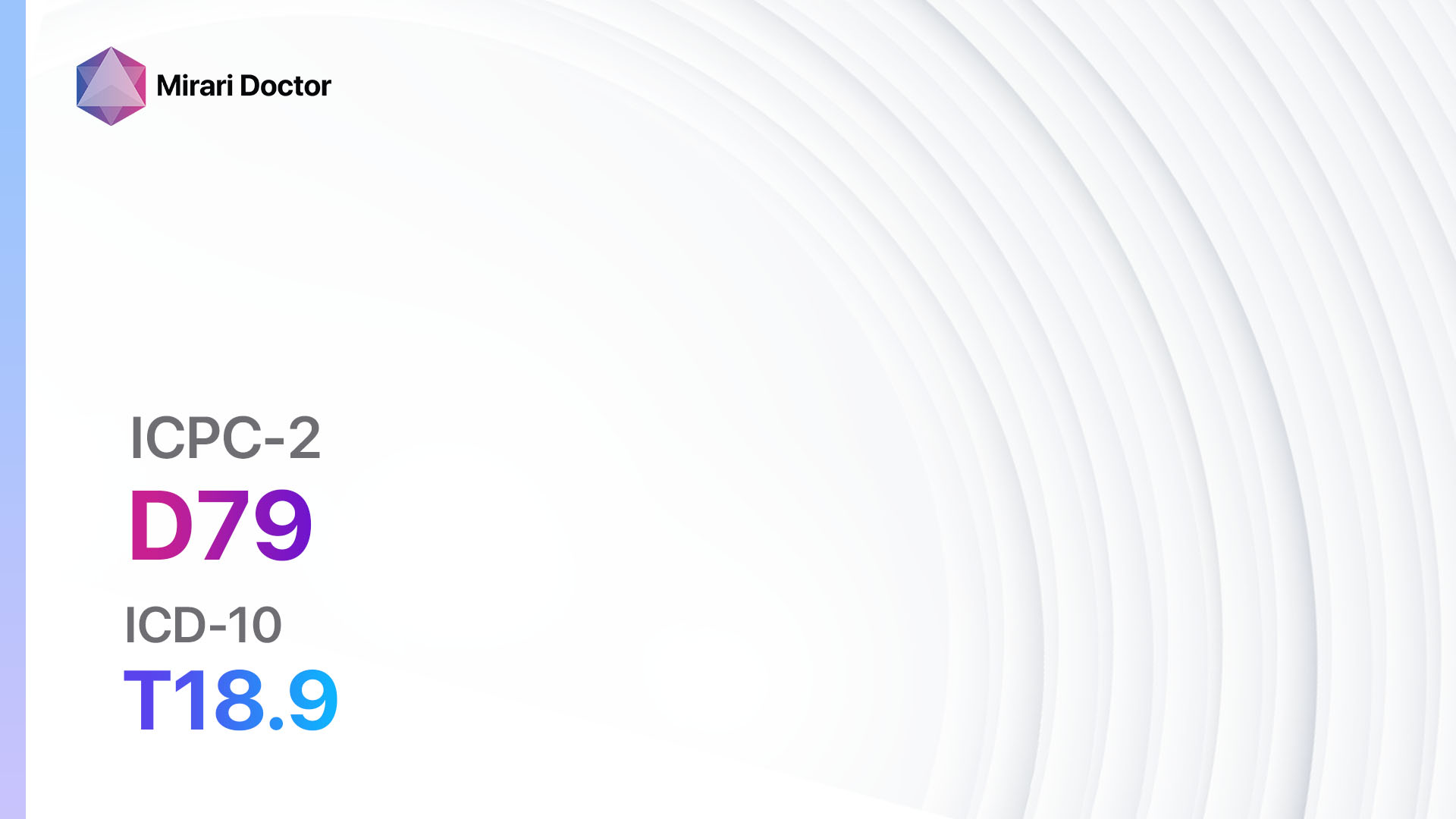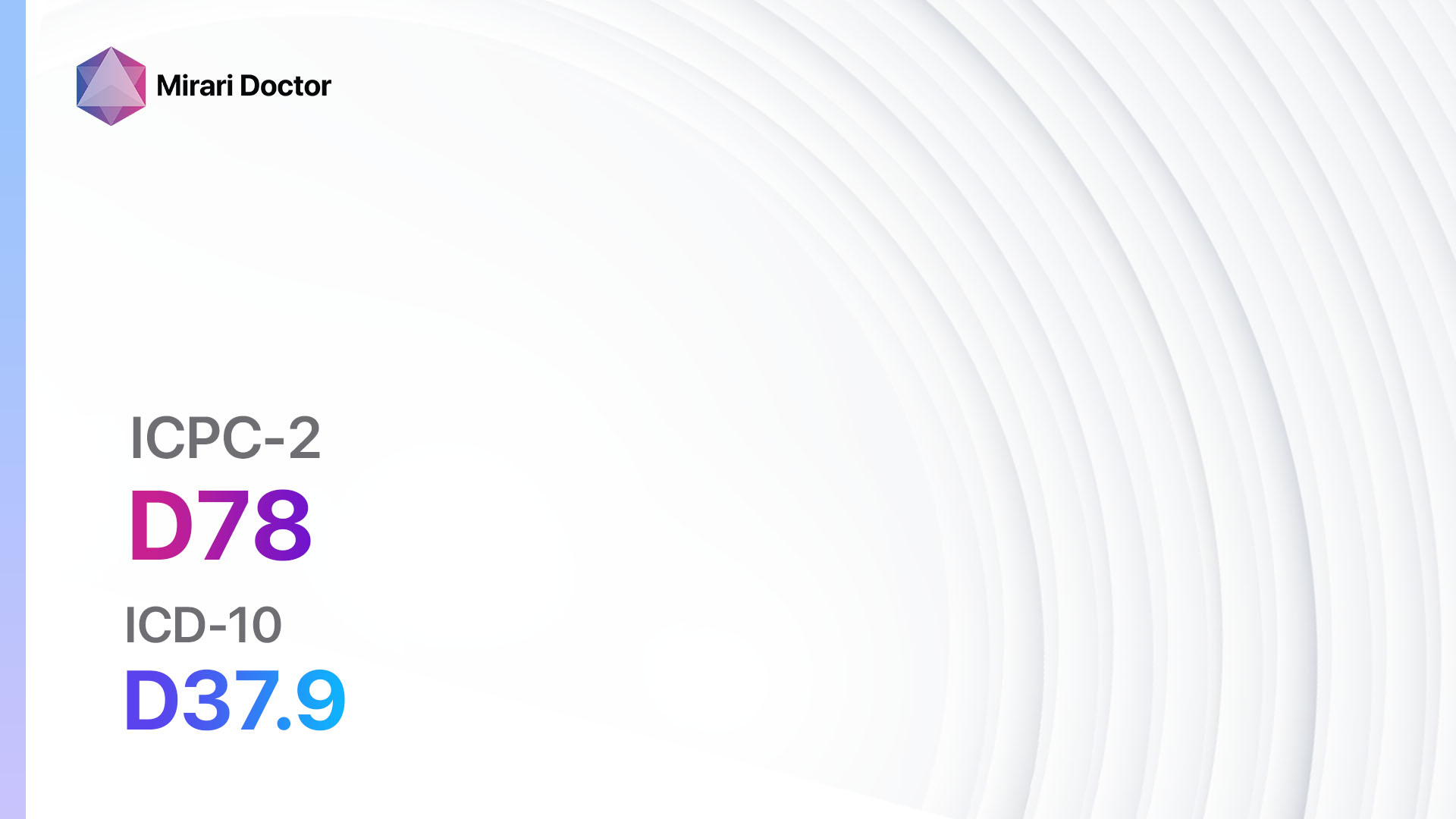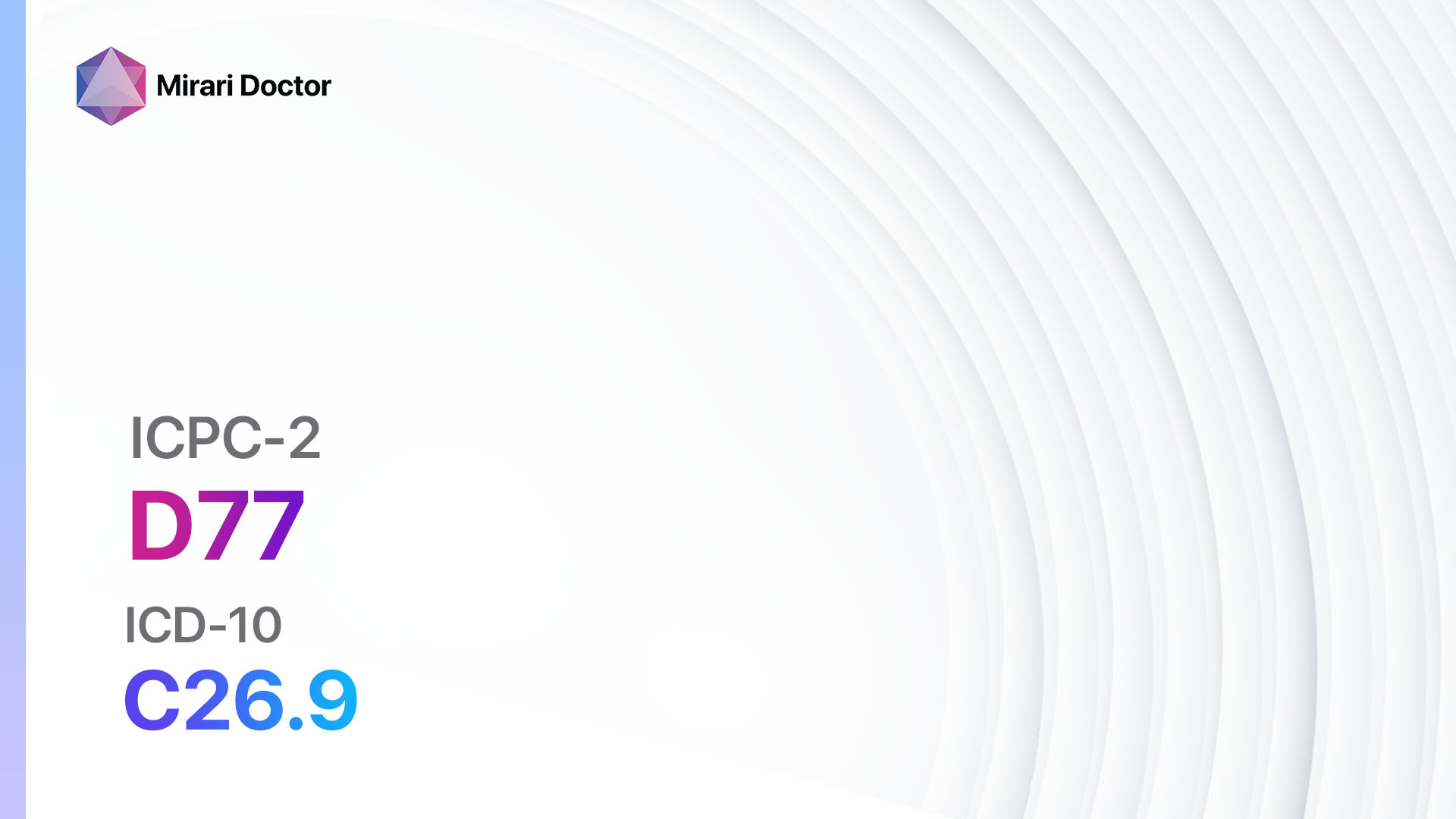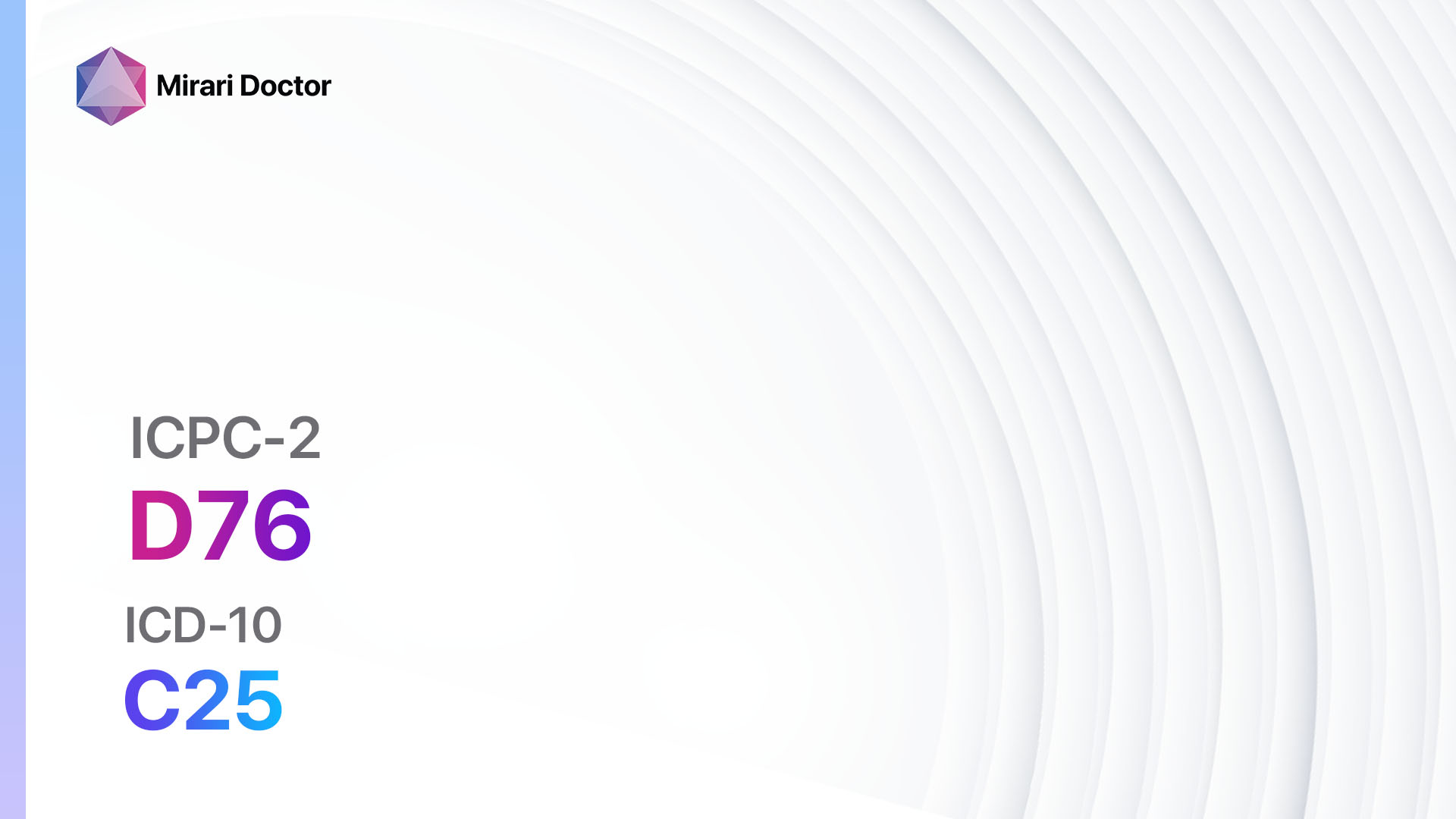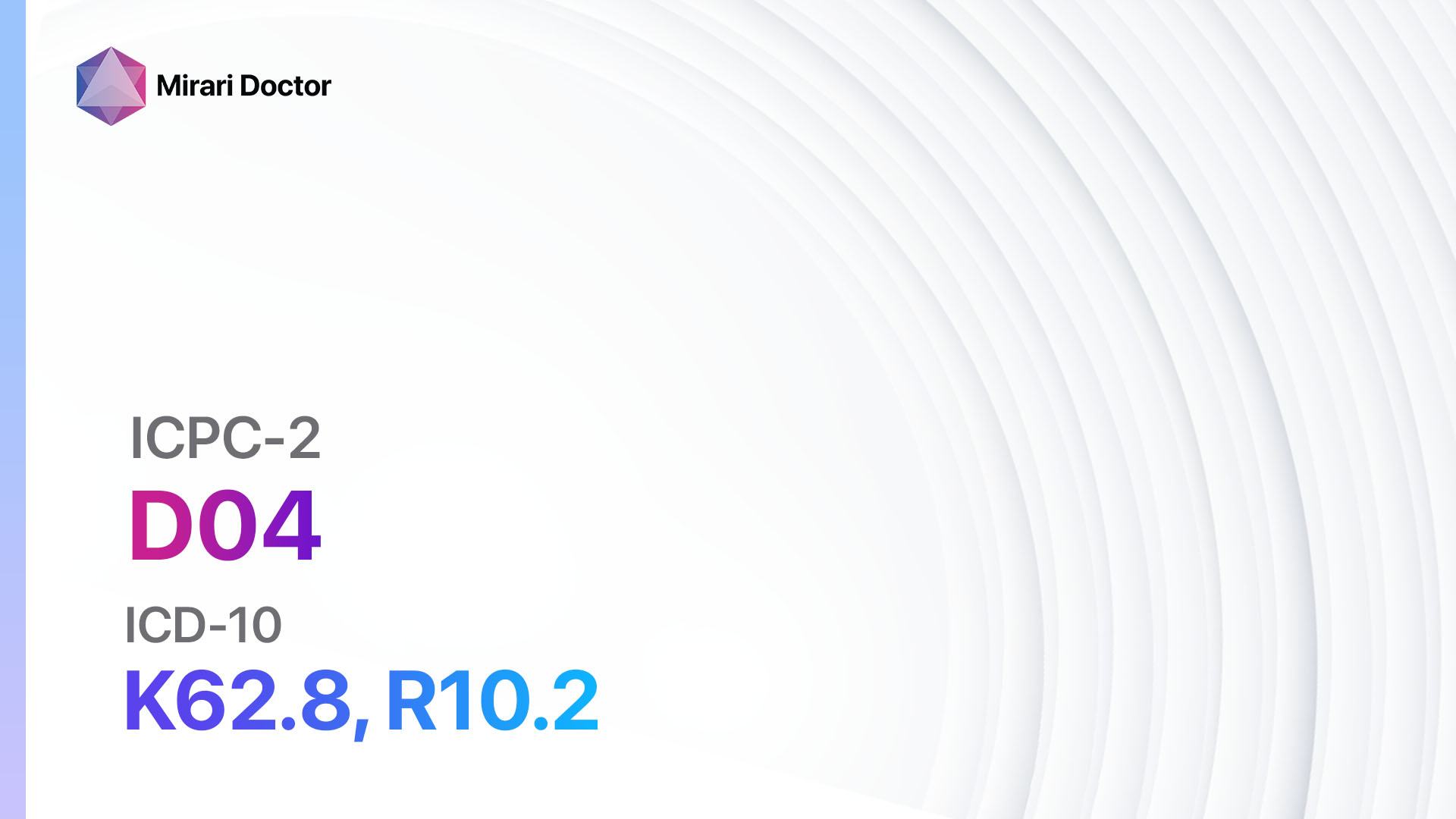
Introduction
Rectal/anal pain refers to discomfort or pain experienced in the rectum or anus. It can be caused by various factors, including anal fissures, hemorrhoids, infections, or inflammatory conditions.[1][2] This guide aims to provide an overview of the symptoms, causes, diagnostic steps, possible interventions, and lifestyle interventions for rectal/anal pain.
Codes
- ICPC-2 Code: D04 Rectal/anal pain[3]
- ICD-10 Code: K62.8 Other specified diseases of anus and rectum, R10.2 Pelvic and perineal pain[4]
Symptoms
- Pain or discomfort in the rectum or anus[5]
- Itching or irritation in the anal area[6]
- Bleeding during bowel movements[7]
- Swelling or lumps around the anus[8]
- Difficulty or pain during bowel movements[9]
Causes
- Anal fissures: Small tears in the lining of the anus, often caused by passing hard stools or straining during bowel movements.[10]
- Hemorrhoids: Swollen blood vessels in the rectum or anus, which can be internal or external.
- Infections: Infections such as anal abscesses or sexually transmitted infections can cause rectal/anal pain.
- Inflammatory conditions: Conditions like inflammatory bowel disease (IBD) or proctitis can lead to rectal/anal pain.
Diagnostic Steps
Medical History
- Gather information about the patient’s symptoms, including the duration and severity of pain, any associated symptoms, and any triggering factors.
- Ask about the patient’s medical history, including any previous episodes of rectal/anal pain, history of anal fissures or hemorrhoids, or any underlying conditions such as IBD or sexually transmitted infections.
- Inquire about the patient’s bowel habits, including the frequency and consistency of bowel movements.
Physical Examination
- Perform a visual examination of the anus and rectum to look for any visible signs of hemorrhoids, anal fissures, or infections.
- Digital rectal examination may be performed to assess the tone of the anal sphincter and to check for any abnormalities or tenderness.
- Proctoscopy or anoscopy may be done to visualize the rectum and lower part of the colon for any abnormalities or signs of inflammation.
Laboratory Tests
- Stool analysis: A stool sample may be collected to check for any signs of infection or inflammation.
- Blood tests: Blood tests may be done to assess the patient’s overall health and to check for any signs of infection or inflammation.
Diagnostic Imaging
- Endoanal ultrasound: This imaging technique uses sound waves to create images of the anal sphincter and surrounding tissues, which can help identify any structural abnormalities or signs of inflammation.
- MRI or CT scan: These imaging modalities may be used to assess the rectum and surrounding structures in more detail, especially in cases where there is suspicion of tumors or abscesses.
Other Tests
- Colonoscopy or sigmoidoscopy: These procedures involve inserting a flexible tube with a camera into the rectum and colon to visualize the entire colon and rectum, which can help identify any underlying causes of rectal/anal pain.
- Anorectal manometry: This test measures the pressure and function of the anal sphincter muscles, which can help diagnose conditions such as anal fissures or sphincter dysfunction.
Follow-up and Patient Education
- Schedule a follow-up appointment to review the results of diagnostic tests and discuss further management options.
- Provide patient education on proper bowel habits, including the importance of a high-fiber diet, staying hydrated, and avoiding straining during bowel movements.
- Discuss the importance of maintaining good hygiene in the anal area and avoiding irritants such as harsh soaps or perfumed products.
Possible Interventions
Traditional Interventions
Medications:
Top 5 drugs for Rectal/anal pain:
- Topical analgesics (e.g., Lidocaine ointment):
- Cost: $10-$30 per tube.
- Contraindications: Hypersensitivity to local anesthetics.
- Side effects: Local skin reactions, allergic reactions.
- Severe side effects: Systemic absorption leading to systemic toxicity.
- Drug interactions: None reported.
- Warning: Avoid excessive use or application to large areas of broken skin.
- Topical corticosteroids (e.g., Hydrocortisone cream):
- Cost: $5-$20 per tube.
- Contraindications: Hypersensitivity to corticosteroids, fungal or bacterial infections.
- Side effects: Skin thinning, skin discoloration.
- Severe side effects: None reported with topical use.
- Drug interactions: None reported.
- Warning: Avoid long-term use or application to large areas of skin.
- Stool softeners (e.g., Docusate sodium):
- Cost: $5-$15 per bottle.
- Contraindications: Hypersensitivity to docusate sodium, intestinal obstruction.
- Side effects: Diarrhea, abdominal cramping.
- Severe side effects: None reported.
- Drug interactions: None reported.
- Warning: Use as directed and avoid excessive use.
- Nonsteroidal anti-inflammatory drugs (NSAIDs) (e.g., Ibuprofen):
- Cost: $5-$15 per bottle.
- Contraindications: Hypersensitivity to NSAIDs, history of gastrointestinal bleeding.
- Side effects: Upset stomach, heartburn.
- Severe side effects: Gastrointestinal bleeding, kidney problems.
- Drug interactions: Other NSAIDs, blood thinners.
- Warning: Use as directed and avoid long-term use.
- Antibiotics (e.g., Metronidazole):
- Cost: $10-$30 per bottle.
- Contraindications: Hypersensitivity to metronidazole, history of blood disorders.
- Side effects: Nausea, metallic taste in mouth.
- Severe side effects: Severe allergic reactions, neurological effects.
- Drug interactions: Alcohol, warfarin.
- Warning: Complete the full course of antibiotics as prescribed.
Alternative Drugs:
- Calcium channel blockers (e.g., Diltiazem): May help relax the anal sphincter and reduce pain.
- Antidepressants (e.g., Amitriptyline): Can be used in low doses to help manage chronic pain.
- Botulinum toxin injections: Can be used to temporarily paralyze the anal sphincter muscles and reduce pain.
Surgical Procedures:
- Hemorrhoidectomy: Surgical removal of hemorrhoids. Cost: $5,000-$10,000.
- Fissurectomy: Surgical removal of anal fissures. Cost: $3,000-$8,000.
- Abscess drainage: Surgical drainage of anal abscesses. Cost: $2,000-$6,000.
Alternative Interventions
- Warm sitz baths: Soaking the anal area in warm water can help relieve pain and promote healing. Cost: Minimal.
- Dietary modifications: Increasing fiber intake and staying hydrated can help soften stools and reduce strain during bowel movements. Cost: Varies depending on dietary choices.
- Topical herbal remedies: Some herbal creams or ointments containing ingredients like witch hazel or aloe vera may provide relief. Cost: $5-$20 per tube.
- Probiotics: Taking probiotic supplements or consuming probiotic-rich foods may help promote a healthy gut and reduce inflammation. Cost: $10-$30 per bottle of supplements.
Lifestyle Interventions
- Good hygiene practices: Keeping the anal area clean and dry can help prevent infections and irritation. Cost: Minimal.
- Regular exercise: Engaging in regular physical activity can help improve bowel function and reduce the risk of constipation. Cost: Varies depending on chosen activities.
- Stress management: Practicing stress-reducing techniques such as meditation or yoga may help alleviate symptoms. Cost: Minimal.
- Avoiding irritants: Avoiding the use of harsh soaps, perfumed products, or rough toilet paper can help prevent further irritation. Cost: Minimal.
- Weight management: Maintaining a healthy weight can help reduce pressure on the rectum and anus. Cost: Varies depending on chosen weight management strategies.
It is important to note that the cost ranges provided are approximate and may vary depending on the location and availability of the interventions. It is recommended to consult with a healthcare professional for personalized treatment options and cost estimates.
Mirari Cold Plasma Alternative Intervention
Understanding Mirari Cold Plasma
- Safe and Non-Invasive Treatment: Mirari Cold Plasma is a safe and non-invasive treatment option for various skin conditions. It does not require incisions, minimizing the risk of scarring, bleeding, or tissue damage.
- Efficient Extraction of Foreign Bodies: Mirari Cold Plasma facilitates the removal of foreign bodies from the skin by degrading and dissociating organic matter, allowing easier access and extraction.
- Pain Reduction and Comfort: Mirari Cold Plasma has a local analgesic effect, providing pain relief during the treatment, making it more comfortable for the patient.
- Reduced Risk of Infection: Mirari Cold Plasma has antimicrobial properties, effectively killing bacteria and reducing the risk of infection.
- Accelerated Healing and Minimal Scarring: Mirari Cold Plasma stimulates wound healing and tissue regeneration, reducing healing time and minimizing the formation of scars.
Mirari Cold Plasma Prescription
Video instructions for using Mirari Cold Plasma Device – D04 Rectal/anal pain (ICD-10:K62.8, R10.2)
| Mild | Moderate | Severe |
| Mode setting: 1 (Infection) Location: 0 (Localized) Morning: 15 minutes, Evening: 15 minutes |
Mode setting: 1 (Infection) Location: 0 (Localized) Morning: 30 minutes, Lunch: 30 minutes, Evening: 30 minutes |
Mode setting: 1 (Infection) Location: 0 (Localized) Morning: 30 minutes, Lunch: 30 minutes, Evening: 30 minutes |
| Mode setting: 2 (Wound Healing) Location: 0 (Localized) Morning: 15 minutes, Evening: 15 minutes |
Mode setting: 2 (Wound Healing) Location: 0 (Localized) Morning: 30 minutes, Lunch: 30 minutes, Evening: 30 minutes |
Mode setting: 2 (Wound Healing) Location: 0 (Localized) Morning: 30 minutes, Lunch: 30 minutes, Evening: 30 minutes |
| otal Morning: 30 minutes approx. $5 USD, Evening: 30 minutes approx. $5 USD |
Total Morning: 60 minutes approx. $10 USD, Lunch: 60 minutes approx. $10 USD, Evening: 60 minutes approx. $10 USD |
Total Morning: 60 minutes approx. $10 USD, Lunch: 60 minutes approx. $10 USD, Evening: 60 minutes approx. $10 USD |
| Usual treatment for 7-60 days approx. $70 USD – $600 USD | Usual treatment for 6-8 weeks approx. $1,260 USD – $1,680 USD |
Usual treatment for 3-6 months approx. $2,700 USD – $5,400 USD
|
 |
|
Use the Mirari Cold Plasma device to treat Rectal/anal pain effectively.
WARNING: MIRARI COLD PLASMA IS DESIGNED FOR THE HUMAN BODY WITHOUT ANY ARTIFICIAL OR THIRD PARTY PRODUCTS. USE OF OTHER PRODUCTS IN COMBINATION WITH MIRARI COLD PLASMA MAY CAUSE UNPREDICTABLE EFFECTS, HARM OR INJURY. PLEASE CONSULT A MEDICAL PROFESSIONAL BEFORE COMBINING ANY OTHER PRODUCTS WITH USE OF MIRARI.
Step 1: Cleanse the Skin
- Start by cleaning the affected area of the skin with a gentle cleanser or mild soap and water. Gently pat the area dry with a clean towel.
Step 2: Prepare the Mirari Cold Plasma device
- Ensure that the Mirari Cold Plasma device is fully charged or has fresh batteries as per the manufacturer’s instructions. Make sure the device is clean and in good working condition.
- Switch on the Mirari device using the power button or by following the specific instructions provided with the device.
- Some Mirari devices may have adjustable settings for intensity or treatment duration. Follow the manufacturer’s instructions to select the appropriate settings based on your needs and the recommended guidelines.
Step 3: Apply the Device
- Place the Mirari device in direct contact with the affected area of the skin. Gently glide or hold the device over the skin surface, ensuring even coverage of the area experiencing.
- Slowly move the Mirari device in a circular motion or follow a specific pattern as indicated in the user manual. This helps ensure thorough treatment coverage.
Step 4: Monitor and Assess:
- Keep track of your progress and evaluate the effectiveness of the Mirari device in managing your Rectal/anal pain. If you have any concerns or notice any adverse reactions, consult with your health care professional.
Note
This guide is for informational purposes only and should not replace the advice of a medical professional. Always consult with your healthcare provider or a qualified medical professional for personal advice, diagnosis, or treatment. Do not solely rely on the information presented here for decisions about your health. Use of this information is at your own risk. The authors of this guide, nor any associated entities or platforms, are not responsible for any potential adverse effects or outcomes based on the content.
Mirari Cold Plasma System Disclaimer
- Purpose: The Mirari Cold Plasma System is a Class 2 medical device designed for use by trained healthcare professionals. It is registered for use in Thailand and Vietnam. It is not intended for use outside of these locations.
- Informational Use: The content and information provided with the device are for educational and informational purposes only. They are not a substitute for professional medical advice or care.
- Variable Outcomes: While the device is approved for specific uses, individual outcomes can differ. We do not assert or guarantee specific medical outcomes.
- Consultation: Prior to utilizing the device or making decisions based on its content, it is essential to consult with a Certified Mirari Tele-Therapist and your medical healthcare provider regarding specific protocols.
- Liability: By using this device, users are acknowledging and accepting all potential risks. Neither the manufacturer nor the distributor will be held accountable for any adverse reactions, injuries, or damages stemming from its use.
- Geographical Availability: This device has received approval for designated purposes by the Thai and Vietnam FDA. As of now, outside of Thailand and Vietnam, the Mirari Cold Plasma System is not available for purchase or use.
References
- Rectal (Anal) Pain: Causes and More – Healthline. (n.d.). Retrieved June 7, 2024, from https://www.healthline.com/health/rectal-pain
- Rectal (Anal) Pain Causes and Treatment – Verywell Health. (n.d.). Retrieved June 7, 2024, from https://www.verywellhealth.com/rectal-pain-causes-2328384
- ICPC-2 Code: D04 Rectal/anal pain – RxReasoner. (n.d.). Retrieved June 7, 2024, from https://www.rxreasoner.com/icpc2codes/D04
- 2024 ICD-10-CM Diagnosis Code K62.89. (n.d.). Retrieved June 7, 2024, from https://www.icd10data.com/ICD10CM/Codes/K00-K95/K55-K64/K62-/K62.89
- Anal Pain | ASCRS – American Society of Colon and Rectal Surgeons. (n.d.). Retrieved June 7, 2024, from https://fascrs.org/patients/diseases-and-conditions/a-z/anal-pain
- Common causes of anal or rectal pain, and how to treat them. (n.d.). Retrieved June 7, 2024, from https://utswmed.org/medblog/anal-rectal-pain-causes/
- 2024 ICD-10-CM Diagnosis Code K62.5. (n.d.). Retrieved June 7, 2024, from https://www.icd10data.com/ICD10CM/Codes/K00-K95/K55-K64/K62-/K62.5
- Anal Pain | ASCRS – American Society of Colon and Rectal Surgeons. (n.d.). Retrieved June 7, 2024, from https://fascrs.org/patients/diseases-and-conditions/a-z/anal-pain
- Common causes of anal or rectal pain, and how to treat them. (n.d.). Retrieved June 7, 2024, from https://utswmed.org/medblog/anal-rectal-pain-causes/
- Anal Fissure Clinical Presentation: History, Physical Examination. (n.d.). Retrieved June 7, 2024, from https://emedicine.medscape.com/article/196297-clinical
Related articles
Made in USA


